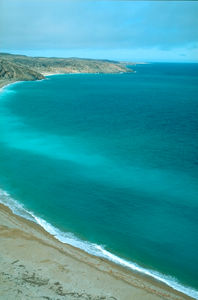Browse "Places"
-
Article
Coaticook
Like most localities in the Eastern Townships, the history of Coaticook starts out in English and ends up in French. The early pioneers were for the most part of American or British origin. The town's founder was Richard Baldwin, Sr, who built a house there in 1830.
"https://d2ttikhf7xbzbs.cloudfront.net/media/media/5337e007-618d-4242-8fa4-c4e30c93c459.jpg" // resources/views/front/categories/view.blade.php
https://d2ttikhf7xbzbs.cloudfront.net/media/media/5337e007-618d-4242-8fa4-c4e30c93c459.jpg
-
Article
Coats Island
Coats Island, Nunavut, 5,498 km2, is one of several islands that guard the northern entrance to Hudson Bay. Known originally as Cary Swan Nest, a name still applied to its southeast point, it received its modern name from William Coats, a sea captain who made many voyages into the bay for the Hudson's Bay Company between 1727 and 1751.
"https://d2ttikhf7xbzbs.cloudfront.net/media/media/853eb7cd-5eb0-46fe-b229-8f9b8b0136b4.jpg" // resources/views/front/categories/view.blade.php
https://d2ttikhf7xbzbs.cloudfront.net/media/media/853eb7cd-5eb0-46fe-b229-8f9b8b0136b4.jpg
-
Article
Cobalt (Ont)
Cobalt, Ont, incorporated as a town in 1907, population 1133 (2011c), 1224 (2006c). The Town of Cobalt, located about 480 km north of Toronto near the Québec border and Lake Timiskaming, lies between the clay belt to the north around New Liskeard and the heavily forested area of Temagami to the south.
"https://d2ttikhf7xbzbs.cloudfront.net/media/media/f0555ad3-4d10-4288-b3f2-ea1afde0054e.jpg" // resources/views/front/categories/view.blade.php
https://d2ttikhf7xbzbs.cloudfront.net/media/media/f0555ad3-4d10-4288-b3f2-ea1afde0054e.jpg
-
Article
Cobourg
Cobourg, Ont, incorporated as a town in 1837, population 18 519 (2011c), 18 210 (2006c). The Town of Cobourg is located on north shore of Lake Ontario, 112 km east of Toronto.
"https://development.thecanadianencyclopedia.ca/images/tce_placeholder.jpg?v=e9dca980c9bdb3aa11e832e7ea94f5d9" // resources/views/front/categories/view.blade.php
https://development.thecanadianencyclopedia.ca/images/tce_placeholder.jpg?v=e9dca980c9bdb3aa11e832e7ea94f5d9
-
Article
Cobourg and Peterborough Railway
One of the 2 earliest railway charters granted in Canada, the Cobourg Rail Road Co was incorporated in 1834 to build a railway from Cobourg northward to Peterborough across Rice Lake. The project was shelved until 1846, when it was revived as the Cobourg and Rice Lake Plank Road and Ferry Co. Samuel Gore built his plank road the 17 km to the lake, but it barely survived the first 2 winters.
"https://development.thecanadianencyclopedia.ca/images/tce_placeholder.jpg?v=e9dca980c9bdb3aa11e832e7ea94f5d9" // resources/views/front/categories/view.blade.php
https://development.thecanadianencyclopedia.ca/images/tce_placeholder.jpg?v=e9dca980c9bdb3aa11e832e7ea94f5d9
-
Article
Cochrane (Alta)
Cochrane, Alta, incorporated as a town in 1971, population 17 580 (2011c), 13 760 (2006c). The Town of Cochrane is located 35 km northwest of Calgary, on the BOW RIVER. It is named for Senator Matthew H.
"https://development.thecanadianencyclopedia.ca/images/tce_placeholder.jpg?v=e9dca980c9bdb3aa11e832e7ea94f5d9" // resources/views/front/categories/view.blade.php
https://development.thecanadianencyclopedia.ca/images/tce_placeholder.jpg?v=e9dca980c9bdb3aa11e832e7ea94f5d9
-
Article
Cochrane (Ont)
Cochrane, Ont, incorporated as a town in 1910, population 5340 (2011c), 5487 (2006c). The Town of Cochrane is located 375 km northwest of North Bay.
"https://development.thecanadianencyclopedia.ca/images/tce_placeholder.jpg?v=e9dca980c9bdb3aa11e832e7ea94f5d9" // resources/views/front/categories/view.blade.php
https://development.thecanadianencyclopedia.ca/images/tce_placeholder.jpg?v=e9dca980c9bdb3aa11e832e7ea94f5d9
-
"https://development.thecanadianencyclopedia.ca/images/tce_placeholder.jpg?v=e9dca980c9bdb3aa11e832e7ea94f5d9" // resources/views/front/categories/view.blade.php
https://development.thecanadianencyclopedia.ca/images/tce_placeholder.jpg?v=e9dca980c9bdb3aa11e832e7ea94f5d9
-
Article
Coffee houses
Cafés that presented folk, blues and, occasionally, pop and jazz musicians. Like the boîte à chansons that was unique to French Canada, the coffee house - often in a converted house, a storefront or a church basement - was characterized by its limited seating capacity (an average of less than 100), informality, and intimacy
"https://development.thecanadianencyclopedia.ca/images/tce_placeholder.jpg?v=e9dca980c9bdb3aa11e832e7ea94f5d9" // resources/views/front/categories/view.blade.php
https://development.thecanadianencyclopedia.ca/images/tce_placeholder.jpg?v=e9dca980c9bdb3aa11e832e7ea94f5d9
-
Article
Cold Lake
Cold Lake, Alberta, incorporated as a city in 2000, population 15, 661 (2021 census), 14,976 (2016 census). The city of Cold Lake is located on a lake of the same name, 290 km northeast of Edmonton. The Cree called the lake “Kinosoo” or “big fish” after a Cree legend. European settlers named the lake for its deep, cold water.
"https://d2ttikhf7xbzbs.cloudfront.net/media/media/9a26c61d-d249-4e98-9fe3-21c0199423c0.jpg" // resources/views/front/categories/view.blade.php
https://d2ttikhf7xbzbs.cloudfront.net/media/media/9a26c61d-d249-4e98-9fe3-21c0199423c0.jpg
-
Article
Coldstream
Coldstream, BC, incorporated as a district municipality in 1906, population 10 314 (2011c), 9471 (2006c). The District of Coldstream lies in the valley of Coldstream Creek, about two kilometres southeast of VERNON. Captain Charles F.
"https://development.thecanadianencyclopedia.ca/images/tce_placeholder.jpg?v=e9dca980c9bdb3aa11e832e7ea94f5d9" // resources/views/front/categories/view.blade.php
https://development.thecanadianencyclopedia.ca/images/tce_placeholder.jpg?v=e9dca980c9bdb3aa11e832e7ea94f5d9
-
Article
Collingwood
Collingwood, Ont, incorporated as a town in 1858, population 19 241 (2011c), 17 290 (2006c). The Town of Collingwood is located on Nottawasaga Bay at the southern end of Georgian Bay, 55 km northwest of Barrie.
"https://development.thecanadianencyclopedia.ca/images/tce_placeholder.jpg?v=e9dca980c9bdb3aa11e832e7ea94f5d9" // resources/views/front/categories/view.blade.php
https://development.thecanadianencyclopedia.ca/images/tce_placeholder.jpg?v=e9dca980c9bdb3aa11e832e7ea94f5d9
-
Article
Colonial Building
The Colonial Building, in St John's, NL, was declared a provincial historical site by an act of the legislature of Newfoundland in 1974.
"https://d2ttikhf7xbzbs.cloudfront.net/media/media/7ef97226-7c00-45f3-a406-be37c48cf23c.jpg" // resources/views/front/categories/view.blade.php
https://d2ttikhf7xbzbs.cloudfront.net/media/media/7ef97226-7c00-45f3-a406-be37c48cf23c.jpg
-
Article
Columbia Icefield
The Columbia Icefield is a mass of ice covering a high plateau between Mount Columbia (3747 m), the highest point in Alberta, and Mount Athabasca (3491 m), located between Banff and Jasper national parks, along the BC-Alberta border.
"https://d2ttikhf7xbzbs.cloudfront.net/media/media/4f68d2f4-7717-496d-a427-bbafb71196fd.jpg" // resources/views/front/categories/view.blade.php
https://d2ttikhf7xbzbs.cloudfront.net/media/media/4f68d2f4-7717-496d-a427-bbafb71196fd.jpg
-
Article
Columbia Mountains
Columbia Mountains are a block of mountains 608 km long and 256 km wide that dominate the landscape of southeastern BC.
"https://d2ttikhf7xbzbs.cloudfront.net/media/media/9b6a1cce-c95d-4cf8-ab82-694169a097f7.jpg" // resources/views/front/categories/view.blade.php
https://d2ttikhf7xbzbs.cloudfront.net/media/media/9b6a1cce-c95d-4cf8-ab82-694169a097f7.jpg
